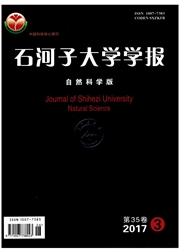

 中文摘要:
中文摘要:
为了从种子层面了解种子大小对物种生存繁衍具有的适应意义,在古尔班通古特沙漠70个固定样地中采集了87种植物种子,通过测量种子大小,结合野外调查数据,分析了不同种子大小物种的丰富度与多度的空间格局。结果发现:1)古尔班通古特沙漠植物种子大小可分为:A(0.1mg%SM%1rag)、B(1mg%SM%10rag)、C(10mg〈SM%100mg)、D(100mg〈SM〈1000mg)、E(1000mg〈SM〈5000mg)5种类型;2)C型、D型、E型种子物种丰富度与总物种丰富度变化格局相同,随经度、海拔和年均降水的增加物种数目极显著增加,但随纬度增加物种数目极显著降低;3)C型、D型2类种子物种多度与总物种多度的变化格局相同,随经度、海拔和年均降水的增加物种多度极显著增加,但随纬度增加物种多度极显著降低,E型种子植物则相反。本研究证明不同种子大小对物种分布会产生不同的影响,其中大种子物种随降雨的增加优势度将降低,所以在未来的沙漠植物保护中要加大对梭梭、白梭梭、沙拐枣等大种子植物的保护力度。
 英文摘要:
英文摘要:
In order to understand the adaptative significance of seed mass(SM)for species survival and reproduction,we analyzed the variations in seed mass among 87 species from 70 permanent plots in the Gurbantunggut Desert. This was performed by measuring the 100-seed weight and the richness and abundance of different types of species,and the spatial pattern were investi gated. The results were as follows : 1) The mass of seeds of plants of the Gurbantunggut Desert can be divided into five classes : A(0.1-1 mg),B(1-10 mg),C(10-100 mg),D(100-1000 mg),and E(1000-5000 rag). 2)The richness of species with type C,D and E increased significantly with longitude,altitude and average yearly precipitation, but decreased significantly with latitude. 3)The abundance of species with type C and D increased significantly with longitude,altitude and average yearly precipitation, but decreased significantly with latitude. However, the opposite was true of type E seeds. Our research shows that different seed type has different influence on the distribution of species. The dominance of the large-sized seeds will reduce with the precipita tion,so in the future the desert plant protection should be intensified for the large sized seed plants like Halozylon ammodendron , Haloxylon persicum ,Calligonum mongolicum ,and so on.
 同期刊论文项目
同期刊论文项目
 同项目期刊论文
同项目期刊论文
 期刊信息
期刊信息
